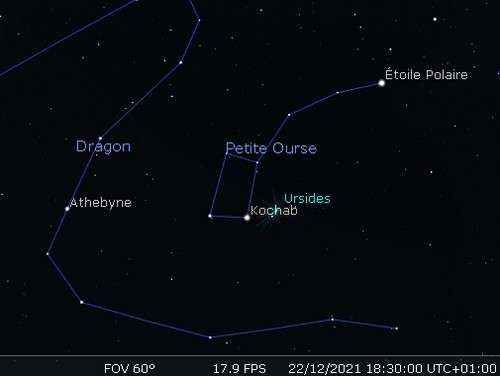Interested in what you just read?
Subscribe to the newsletter Ephemeris : everything that will happen in the sky in the coming month: what to watch, where to watch? All our newsletters
Active from December 17 to 26, the swarm ofshooting Stars des Ursides is the last observable swarm of the year. It owes its name to the constellation where it comes from: the Little Dipper, Ursa minor in Latin. The comet at the origin of the swarm was discovered by Pierre Méchain in 1790, and was therefore called the comet Méchain. Rediscovered by Horace Parnell-Tuttle in 1858, it was renamed Comet Tuttle. It returns to the vicinity of the Earth every 13 and a half years.
Observers will see the Ursids streak the sky at a speed of 33 km / s. The hourly rate is ten, but beware: in 1945 and 1986, it was seen up to 50 meteors per hour. In 1988, 1994 and 2000, a slightly higher hourly rate was also observed, but lower than in the years previously cited. This swarm should therefore be watched closely.
To observe the Ursids, one must look over the northern horizon at around 5.30 p.m. UT, to the left of theNorth Star A little lower. This constellation never sets in Europe, so it is visible all night long. The Moon will not be there, which will be all the more beneficial.
.
fs4
